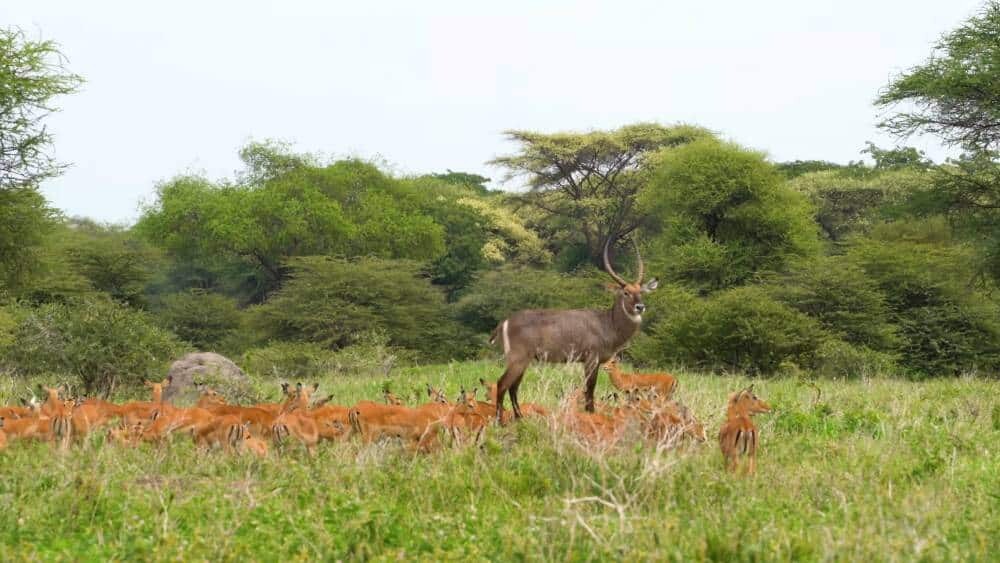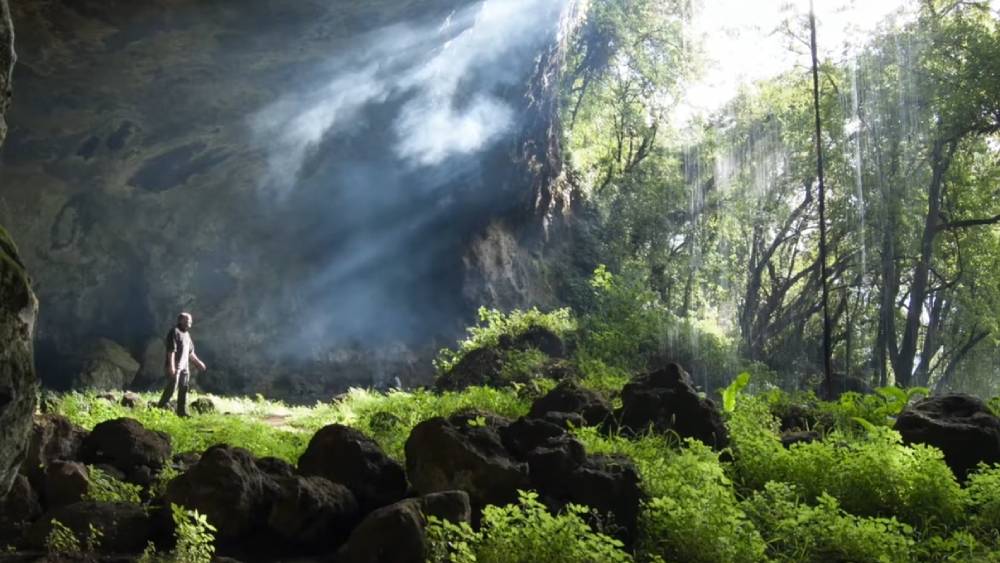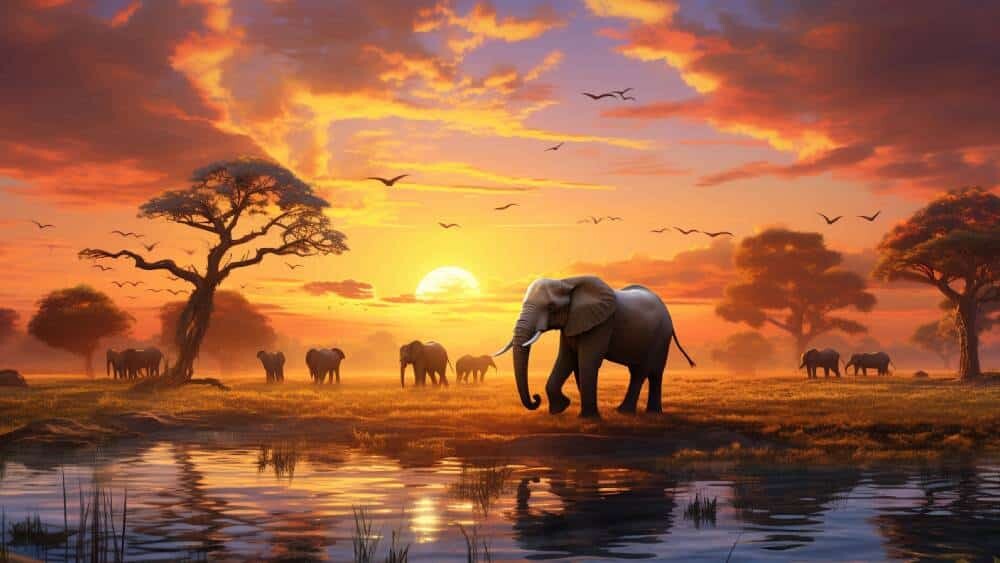The level of enjoyment you will get on a Safari adventure in Africa depends on the time to visit. Dry and wet seasons will cause drastic changes in the weather and animals’ behavior. So you need to know when is the best time to go on an African safari before booking.
According to African travel guides, the best time for an African safari is during the summer months in June and October. This is when the weather is cooler, making exploring and observing wildlife more comfortable.
During these months, animals are also more likely to be out and about as they search for water sources. However, other countries allow visitors to visit in other months and enjoy wild experiences. So keep reading to discover why the seasons for an African safari.
When Is the Best Time to Go on an African Safari: Based on Countries and Months
You can witness diverse wildlife and breathtaking scenery on an African safari during several best times in various countries. Some are:
- Tanzania Safari from January to February
- South Africa Safari from March to April
- Ethiopia Safari from June to September
- Safari from May to June
- Madagascar
- Zimbabwe
- Safari from July to August
- Rwanda
- Botswana
- Safari from September to October
- Ghana
- Kenya
- Uganda Safari from November to December
Let’s discuss this in detail:
Tanzania Safari from January to February

If you’re trying to book a Tanzania safari, January to February is the perfect time. During this period, the Great Movement of Wildebeests takes place, making it an awe-inspiring natural phenomenon.
Picture yourself witnessing the mass calving of wildebeest calves as they enter the world surrounded by their protective herd. As you venture through the vast plains of Serengeti, keep your eyes peeled for lions following the herds, ready to seize hunting opportunities.
Watch in amazement as cheetahs, hyenas, and wild dogs appear to prey on vulnerable herd members. And if you’re lucky enough during your Tanzania safari, you might even witness a wildebeest or zebra having its young right before your eyes.
South Africa Safari from March to April
During March and April, you’ll have the opportunity to witness incredible wildlife sightings on a South Africa safari. These months fall within the country’s wet season, which means lush green landscapes and abundant animal activity.
The famous Kruger National Park is a must-visit destination during this time, known for its diverse wildlife population, including the iconic ‘big five’ lions, elephants, buffalos, leopards, and rhinoceroses.
Imagine driving through the park in an open-top vehicle, spotting majestic elephants bathing in watering holes or a pride of lions basking in the afternoon sun.
Apart from thrilling game drives, South Africa offers vibrant city life, with Johannesburg just a stone’s throw away. So pack your bags and prepare for an unforgettable adventure filled with awe-inspiring nature and cultural experiences.
Ethiopia Safari from June to September
From June to September, the rainy season in Ethiopia provides a unique opportunity to explore the country’s diverse wildlife and breathtaking landscapes. As you travel through this UNESCO World Heritage Site during this time, you will witness the transformation of the landscape into a lush paradise.
Thanks to the rainfall that nourishes the alpine forests, the mountains and valleys are covered in vibrant greenery. This abundance of vegetation attracts a variety of wildlife, including leopards, lions, hyenas, bushbucks, and klipspringers. The park also has numerous bird species that add to its charm.
Pack essential rainproof items during Ethiopia’s rainy season despite more mosquitoes and insects during this period.
Safari from May to June
When planning your African safari adventure, two countries that should be at the top of your list are Madagascar and Zimbabwe.
Madagascar
Safaring May and June in Madagascar offer pleasant temperatures, lush landscapes, and a low tourist season for those considering an African safari. Despite being winter, the island’s proximity to the equator ensures comfortable weather.
You’ll be mesmerized by the vibrant greenery that blankets the land during this time. Moreover, with fewer tourists around, you can fully immerse yourself in the beauty of Madagascar’s wildlife and nature without any distractions.
Zimbabwe
Now that you’ve explored Madagascar let’s move on to another exciting safari destination: Zimbabwe. In May, the country experiences a transition from wet to dry season. The recent rains paint the land in vibrant shades of green, but the weather becomes drier over time, and nights grow colder.
Safari from July to August
If you’re planning a safari from July to August, Rwanda and Botswana are two incredible destinations to consider.
Rwanda
During July and August, you’ll have the best chance to witness gorilla trekking adventures in Rwanda’s rainforests. These two months are perfect for exploring Volcanoes National Park because of the dry season.
Sunshine and clear skies make spotting these magnificent creatures in their natural habitat easier. As you journey through the lush greenery, you’ll be captivated by the beauty of the rainforest. The close encounters with gorillas will leave you with unforgettable memories.
Botswana
You’ll be amazed by Botswana’s diverse wildlife and breathtaking landscapes. The best time to go on an African safari in Botswana is during the summer months, from May to October. During these months, less vegetation makes it easier to spot animals as they concentrate close to waterholes and rivers.
Also, the Okavango Delta is in heavy flood during this time, adding to the beauty of the surroundings. With clear skies, rare rain, and fewer mosquitoes, it’s a perfect time to experience all that Botswana offers.
Safari from September to October
Africa’s two best safari destinations are Ghana and Kenya, between September and October.
Ghana
Don’t miss the opportunity to spot guinea fowl, African grey parrots, and a variety of bird species in the dense forest of Kakum National Park while on an African safari in Ghana.
September and October are great times to visit as it marks the end of the dry season. You won’t have to worry about travel delays or flooding with light rainfall. Take a canopy tour and immerse yourself in the vibrant wildlife that Ghana has to offer.
Kenya
Kenya’s national parks and reserves offer diverse landscapes, abundant wildlife, and excellent safari opportunities. If you’re considering an African safari, September and October are prime months to visit Kenya.
During this time, the weather is cooler and part of the dry season, meaning you’ll have clear skies for your adventure. With over 40 protected areas and reserves, you can witness the incredible beauty of Kenya while spotting amazing wildlife in its natural habitats.
Uganda Safari from November to December

For the best experience, consider going on a Uganda Safari from November to December. During this time, the weather in Uganda is generally dry and sunny, making it ideal for exploring stunning landscapes and spotting wildlife.
The rainforest of Bwindi Impenetrable National Park is home to nearly half of the world’s mountain gorilla population, so if gorilla trekking is on your bucket list, this is the perfect time to go.
In addition to gorillas, you can encounter other fascinating animals like elephants, lions, zebras, and hippos during your safari. The lush greenery of the rainforest provides a beautiful backdrop for your adventure and offers plenty of opportunities for breathtaking photos.
How many days do you need for an African safari?
The ideal duration for an African safari is typically around 10-12 nights. This allows travelers enough time to fully immerse themselves in the wildlife and natural beauty of the continent.
With this time, you can explore multiple national parks and reserves. This allows you to spot various animals in their natural habitats. Imagine waking up to the sound of lions roaring in the distance or witnessing a herd of elephants crossing your path.
How much is an average 10-day African safari cost?
You can expect to pay around $1,800 per person for a 10-day Africa safari tour without movement costs. This price is just the starting point, as luxury tours cost up to $5,000 per person.
But the overall cost of an African safari depends on various factors such as accommodation type, transportation options, and additional activities included in the package. For instance, if you opt for a budget-friendly safari experience, the price will be lower than staying at luxurious lodges or tented camps.
Embark on Your African Safari Adventure Based on the Months
With so many diverse regions and countries, determining the best time to take an African safari depends on your free time, weather conditions, and budget. Yet, you must remember that the dry season is usually the best time to see wildlife in its natural habitat.
During this time, you can expect mild weather, fewer mosquitoes, and higher concentrations of wildlife. From the famous Masai Mara migration to the rolling savannas of Tanzania, Africa provides an exceptional range of safari experiences.
So, don’t hesitate to plan your next safari adventure to Africa. Just make sure to pack your bags for the dry season, sit back, and enjoy all the wonders Africa offers on a truly immersive safari.

